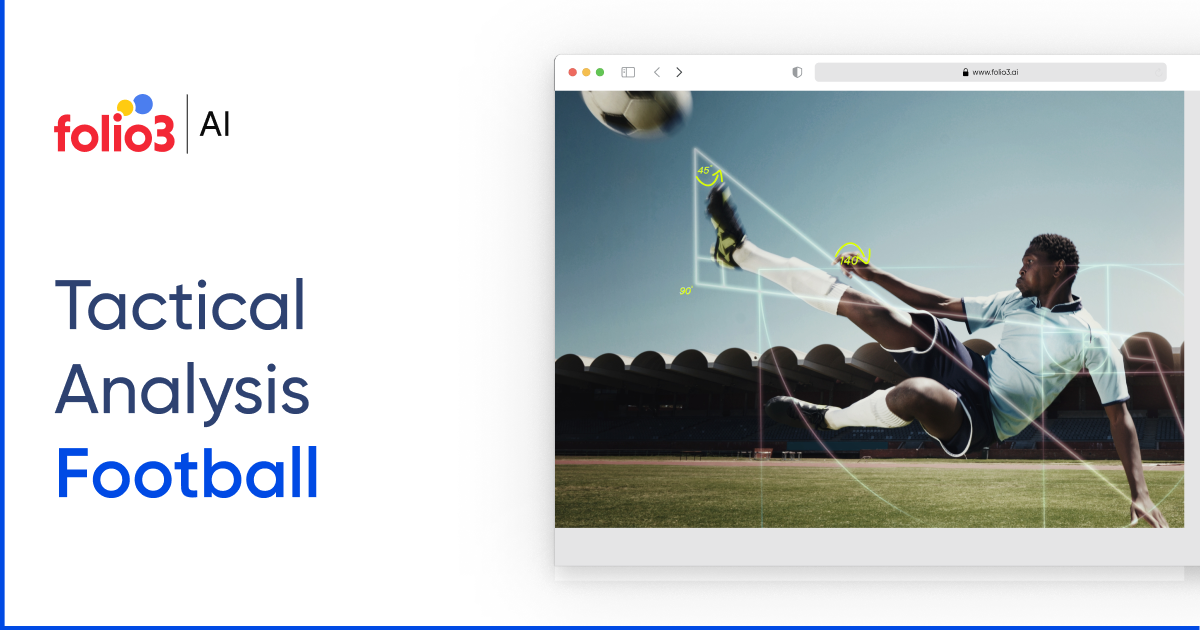Tactical analysis in football refers to the systematic study of a team’s playing strategies, including formations, movement patterns, and in-game decisions, using tools like video analysis, performance data, and heat maps.
It allows teams to understand not just what happened on the pitch, but why it happened and how it can be improved or exploited in future games. This method has been increasingly adopted across various levels of football, including in the United States.
A notable example is Nashville SC, a Major League Soccer (MLS) team from Tennessee. Since joining the league in 2020, Nashville SC has heavily relied on tactical analysis to build a defensively solid and strategically disciplined team. According to an article by ESPN (source: ESPN), the club used data-driven scouting and match analysis to craft a compact defensive setup that conceded the fewest goals in the Eastern Conference during their debut season. As a result, they reached the MLS playoffs in both 2020 and 2021, establishing themselves as serious contenders early on.
Read on to see tools being used in tactical analysis today, the latest trends shaping the game, and the powerful benefits for players, coaches, analysts, and even fans.
Core Elements of Tactical Analysis
Understanding the game at a tactical level requires dissecting several key components that form the backbone of team performance. Here are the core elements analysts focus on when evaluating football tactics.
1. Formations and Shape
Formations are the structural blueprints of a team’s setup on the pitch—such as 4-4-2, 4-3-3, or 3-5-2. Tactical analysis examines how teams maintain or alter their shape during different game situations—whether defending deep, pressing high, or transitioning quickly. A team’s formation affects passing lanes, space coverage, and how well players support each other.
Example: Teams like Manchester City often morph their shape in possession—starting with a back four but building play with a back three and an extra midfielder dropping in.
2. Player Roles and Positioning
Each player has a specific tactical role depending on the system. A full-back might operate as a traditional wide defender or as an inverted playmaker drifting inside. Tactical analysis looks at how well players understand and execute their roles—and how positioning affects both defense and attack.
Example: In modern football, defensive midfielders often serve as deep-lying playmakers, dictating tempo and shielding the backline simultaneously.
3. Phases of Play
A match is divided into phases: attack, defense, transition (both offensive and defensive), and restarts. Tactical analysts break down how a team behaves in each phase, identifying patterns like counter-pressing after losing possession or compactness while defending.
Example: Jurgen Klopp’s Liverpool is known for its “gegenpressing” during the transition phase—applying immediate pressure to win the ball back high up the pitch.
4. Set Pieces
Set pieces—such as corners, free kicks, and throw-ins—can often decide tight games. Tactical analysis evaluates how teams prepare offensively and defensively for these situations. This includes marking schemes (zonal vs. man-to-man), decoy runs, and routines.
Example: Atletico Madrid under Diego Simeone has built a reputation for structured and disciplined set-piece defending, often neutralizing aerial threats with tactical clarity.
Tools and Methods of Tactical Analysis
Modern football has evolved beyond instinct and observation, today, it’s deeply data-driven and tech-enabled. Tactical analysts now rely on a combination of visual insights, statistics, and advanced software to gain a competitive edge. Here are the key tools and methods used:
1. Video Analysis
Football Video analysis is one of the most fundamental tools in tactical analysis. Coaches and analysts study match footage to observe positioning, player decision-making, team shape, and movement off the ball. Slow-motion replays, annotations, and frame-by-frame breakdowns help teams identify strengths, weaknesses, and patterns across multiple games.
Example: Clubs use software like Hudl or Coach Paint to annotate videos, highlight tactical shifts, and present breakdowns during team meetings.
2. Data and Statistics
Raw data has transformed how football is analyzed. Metrics such as pass completion rates, xG (expected goals), interceptions, distance covered, and heat maps provide measurable insights into individual and team performance. Analysts use this information to evaluate efficiency, pressure zones, and chance creation.
Example: A coach may notice through data that their midfield is losing too many duels, prompting a tactical switch or a personnel change.
3. Software and Technology
Specialized platforms and tools provide deeper tactical intelligence. GPS trackers, motion sensors, and optical tracking systems gather real-time data on player movements and ball trajectories. Software such as Wyscout, StatsBomb, Second Spectrum, and Instat help visualize data trends, automate reports, and simulate scenarios.
Example: Second Spectrum, used by MLS and the NBA, creates dynamic 3D visualizations of tactical movements, helping teams simulate and strategize for upcoming fixtures.
Tactical Trends in Modern Football
The 2020s have seen football tactics evolve at an unprecedented pace, with coaches experimenting with systems, player roles, and pressing strategies to gain an edge. Let’s explore the standout tactical trends shaping the modern game:
1. Popular Systems and Tactical Philosophies
Gone are the days when the 4-4-2 was the default setup. In today’s game, formations are fluid and often adjusted mid-match. Some of the most popular systems include:
- 4-3-3 – Ideal for wide attacking play and midfield control (e.g., Barcelona, Liverpool).
- 3-4-3 or 3-5-2 – Offers defensive solidity with wingbacks providing width (e.g., Chelsea under Tuchel, Inter Milan).
- 4-2-3-1 – A balanced formation with a double pivot to support both attack and defense.
Philosophically, there’s a split between possession-based teams (like Manchester City) and vertical, transition-based teams (like RB Leipzig), with many clubs blending both depending on the situation.
2. Player Versatility and Hybrid Roles
In modern football, players are no longer confined to rigid positions. Versatility is a valuable asset, with coaches encouraging players to take on multiple roles depending on the phase of play.
- Inverted Full-Backs: Traditionally wide defenders who tuck into midfield (e.g., João Cancelo, Oleksandr Zinchenko).
- False Nines: Forwards who drop deep to overload midfield rather than staying up front (e.g., Lionel Messi, Kai Havertz).
- Box-to-Box Centre-Backs: Defenders with license to step into midfield and initiate attacks (e.g., John Stones).
This flexibility makes teams less predictable and more adaptable mid-game.
3. High-Pressing Systems and Their Counters
One of the most dominant trends is the use of high pressing—where teams aggressively close down opponents high up the pitch to force turnovers and create scoring chances.
- Gegenpressing, popularized by Jürgen Klopp, is one such system where the team presses instantly after losing possession.
- Man-to-man high pressing, used by Marcelo Bielsa’s Leeds, sees every opposition player marked tightly across the pitch.
Counter-Trends: As a response, some teams have developed strategies to beat the press:
- Vertical quick passing to bypass the press.
- Luring the press with short passes before switching play or launching long balls.
- Goalkeepers as playmakers, like Ederson or Ter Stegen, who initiate attacks with precise distribution.
These tactical trends highlight how football is becoming more cerebral and system-driven, with marginal gains often making the difference at the highest levels.
Benefits of Tactical Analysis in Football
Tactical analysis isn’t just for coaches and analysts—it influences every aspect of the game, from player development to fan experience. Here’s how it adds value across the board:
1. Improved Team Performance
At its core, tactical analysis helps teams perform better by identifying what’s working and what’s not. Through post-match reviews and pre-game planning, clubs can fine-tune strategies, enhance coordination, and correct positioning errors that might otherwise go unnoticed.
Result: More consistent performances, fewer tactical mistakes, and higher chances of winning.
2. Informed Decision-Making for Coaches
Coaches now rely heavily on tactical data to make smart decisions—whether it’s choosing the right formation, adjusting the press, or deciding substitutions based on fatigue or match dynamics. It shifts decision-making from gut instinct to evidence-based strategy.
Example: Real-time analytics can alert a coach if an opposing winger is creating overloads, prompting a tactical tweak mid-game.
3. Player Development
Tactical analysis gives players personalized insights into their performance. They can review their positioning, movement, and decision-making in detail. This feedback loop accelerates learning, builds football intelligence, and helps players adapt to multiple roles.
Result: Smarter, more versatile players with better tactical awareness.
4. Opponent Preparation
Detailed scouting reports and match footage of opponents allow teams to exploit weaknesses and prepare counter-strategies. Analysts break down how opponents press, build-up, and defend set pieces to gain a competitive edge.
Result: Teams enter matches better prepared, reducing the element of surprise.
5. Fan Engagement and Education
With the rise of social media, tactical YouTube channels, and sports analytics platforms, fans are becoming more informed than ever. Tactical breakdowns offer a deeper appreciation of the game’s complexities, turning passive viewers into engaged analysts.
Example: Platforms like Tifo Football and The Athletic regularly produce digestible tactical content for fans.
6. Injury Prevention and Load Management
Using tracking data and video analysis, teams monitor players’ workload, movement intensity, and biomechanical patterns. This helps identify fatigue or risk of injury before it becomes serious—especially crucial in congested fixture calendars.
Tools Used: GPS trackers, wellness dashboards, and motion analysis tools like Catapult.
Examples of Tactical Analysis in Football
These examples illustrate how tactical analysis and implementation has significantly influence team performance in MLS.
1. Austin FC – Tactical Flexibility in 2022
In their second MLS season, Austin FC showcased significant tactical adaptability. They employed flexible formations and strategic substitutions, allowing them to adjust their game plans effectively against various opponents. This approach contributed to their strong performance in the Western Conference.
2. Philadelphia Union – Direct Play and Pressing in 2023
The Philadelphia Union maintained a direct and vertical style of play throughout the 2023 season. Their tactical approach involved quick transitions and a high-pressing system, aiming to disrupt opponents and capitalize on fast breaks. This strategy was pivotal in their successful campaign.
3. Nashville SC – Defensive Organization in 2020
In their inaugural MLS season, Nashville SC emphasized a solid defensive structure. Their tactical focus on maintaining a compact shape and disciplined defending led them to concede the fewest goals among expansion teams and secure a playoff spot.
Final Words: The Future of Football is Tactical – Powered by AI
Recent headlines from top leagues show how AI and advanced analytics are influencing everything from injury prevention to talent scouting and even fan engagement. Elite clubs like Manchester City, LAFC, and Bayern Munich are investing in AI-powered platforms to refine strategies and personalize player development. Even broadcasters and fantasy sports platforms now use tactical insights to enhance the viewer experience.
How Folio3 AI Can Help, we specialize in building custom AI solutions tailored for the sports and performance analysis industry. Whether you’re a professional club, an academy, or a data analytics company, we provide.
- Automated Sports Video Analysis using computer vision to track player movements, formations, and ball interactions in real time.
- Tactical Pattern Recognition to identify weaknesses and strengths across matches.
- Player Tracking & Heatmaps using AI to visualize positioning, distance covered, and tactical efficiency.
- Custom Dashboards to make data easy to understand for coaches, analysts, and executives.
Our tools are built to integrate with your existing systems or can be customized from scratch to match your strategic needs.

Areeb is a versatile machine learning engineer with a focus on computer vision and auto-generative models. He excels in custom model training, crafting innovative solutions to meet specific client needs. Known for his technical brilliance and forward-thinking approach, Areeb constantly pushes the boundaries of AI by incorporating cutting-edge research into practical applications, making him a respected developer in folio3.









